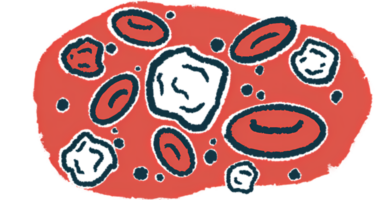Deregulated RNA Molecules May Contribute to RRMS, Study Finds

The levels of three small, regulatory RNA molecules — long non-coding RNAs — are deregulated in blood samples of patients with relapsing-remitting multiple sclerosis (RRMS), a study reports.
The long non-coding RNAs are involved in the regulation of the natural immune response and DNA-damage response, supporting the theory that these pathways may be potential contributors for MS.
The study “Dysregulation of long non-coding RNA profile in peripheral blood of multiple sclerosis patients” was published in the journal Multiple Sclerosis and Related Disorders.
Long non-coding RNAs regulate the activity (expression) of genes involved in several biological functions, including the immune response.
Increasing evidence shows long non-coding RNAs in various immune cells — T-cells, B-cells, macrophages, and natural killer cells — are linked in autoimmune diseases like MS.
Previous studies have found increased levels of various immune-related long non-coding RNAs in the blood of RRMS patients compared to healthy controls.
For this study, researchers measured the levels of three specific long non-coding RNAs — the nuclear paraspeckle assembly transcript 1 (NEAT1), P21 associated ncRNA DNA damage activated (PANDA), and taurine-up-regulated gene 1 (TUG1) — in blood samples of 50 RRMS patients, and compared it to 50 age-matched healthy people with no history or clinical signs of neurologic or autoimmune disorders. All MS patients underwent treatment with interferon-beta.
Researchers looked specifically at how the levels of the three RNA molecules might correlate with MS features.
NEAT1 is important for the regulation of the so-called innate immune response — the nonspecific defense mechanisms that come into play immediately or within hours of a potential threat to the body. TUG1 and PANDA are involved in responses to salvage the DNA molecule for “insults,” more commonly known as DNA damage responses.
The levels of all three long non-coding RNAs were significantly higher in RRMS patients compared to controls — the levels of TUG1 were increased by 4-fold relative to healthy controls, PANDA levels were increased 3.7-fold, and NEAT1 by 2.9-fold.
Interestingly, researchers found significant correlations between the levels of the three long non-coding RNAs in RRMS patients, which suggest a similar mechanism for their regulation.
In female RRMS patients, the levels of NEAT1 and TUG1 were inversely correlated with disease duration, meaning the lower the levels of these RNAs, the longer the disease endured. NEAT1 levels also were inversely correlated with age at disease onset.
No correlation with clinical parameters was found for PANDA.
Among all the three long non-coding RNAs, TUG1 showed the best performance as a potential predictive disease biomarker. However, “future studies are needed to evaluate the performance of these lncRNAs [long non-coding RNAs] in larger samples sizes to find suitable biomarkers with the potential to change the management of MS at important stages of the disease duration to avoid neurological sequels,” researchers wrote.
Overall, “we demonstrated up-regulation of three lncRNAs with possible roles in DNA damage response and immune response regulation in MS patients which highlights the importance of these pathways in MS and warrants further studies to find the therapeutic aspects of these results,” the research team concluded.






